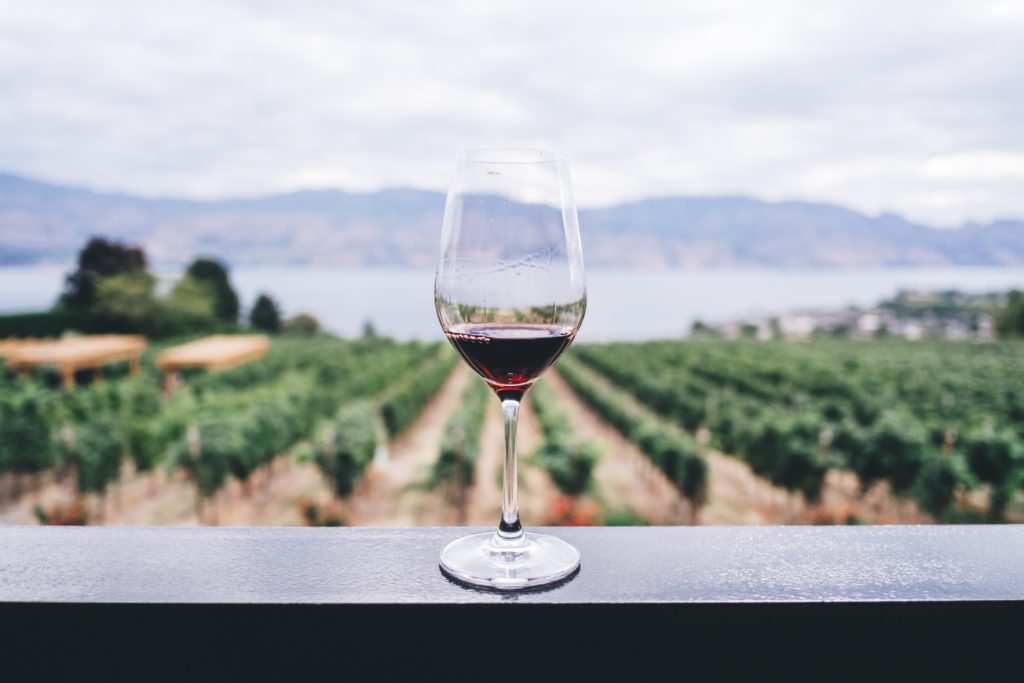Red Wine Appearance
Episode #4 of the course Introduction to red and white wine by Paul Kalemkiarian
Now that you know how red wine is made, you’re ready to take a look at red wine in the glass and see what its appearance can tell us. From bright ruby to deep purple, there’s much you can tell about a wine from how it looks.
If the taste and smell of a wine are the two factors that make it pleasant or unpleasant to drink, its appearance is just as important when you come to judge what it is and how good it is. Red—and pink—wines come in an astonishing range of slightly varying colors. Their appearance depends on the type of grape from which the wine was made, the way in which the wine was produced, and perhaps most important of all, its age.
The color in any wine comes from pigment in the grape skins. The longer the fermenting grape juice is allowed to remain in contact with the skins and the higher the temperature of the fermentation, the darker the wine. So, rosé is really a half-dyed red wine.
Newly-made red wines are almost always brightly colored: cherry-red to bluey-purple and all the tones in between. As it matures, the color of red wine will change to wood-like brown and eventually, as the wine nears the end of its days, possibly pale to bronze.
When judging the appearance of a wine, you are looking not only at its color but also at the way in which that color is “fixed” in the liquid. Two glasses of wine that seem identical when looked at from the side or from above can look totally different when held at an angle over a sheet of paper. Try tilting the glass at a 45° angle so you have varying depths of wine to view. You’ll want lots of light—natural light, if you can get it—when making this examination, especially if you are comparing wines.
If you have to guess which of two wines is older, look at what is happening at the edge of the wine. If the edge is slightly bluey-black or just a thinned-out, paler version of the deeper color, this is a young wine. If the edge has a band of orangey-brown or even yellow, then the wine is at least a few years old. The one exception to this rule is a wine that is so aged that the orangey edge has crept its way right down to the “body” of the wine. Just as the particular weather conditions of the year in which they were made can cause certain vintages to die particularly early or late, the color of the wine will tend to reflect the same phenomenon. So, a glass of 1974 (an early-maturing vintage) Burgundy may well look and taste older than a youthful 1971.
Another aspect of a wine’s appearance that you’ll want to pay attention to is its clarity. If a wine is hazy or cloudy, that’s a good indication that the wine has “gone off” and is no longer healthy to drink.
The next time you go to taste a wine, look at it for a moment or two before sniffing it and raising it to your lips. Then see whether the appearance, “nose,” and taste all measure up to each other.
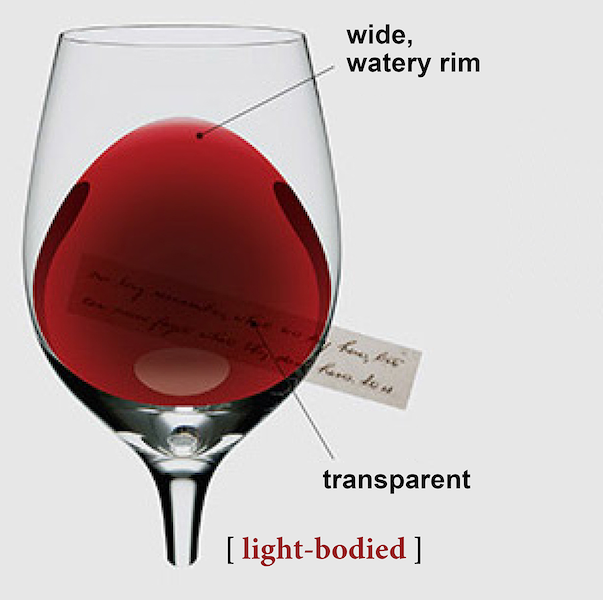
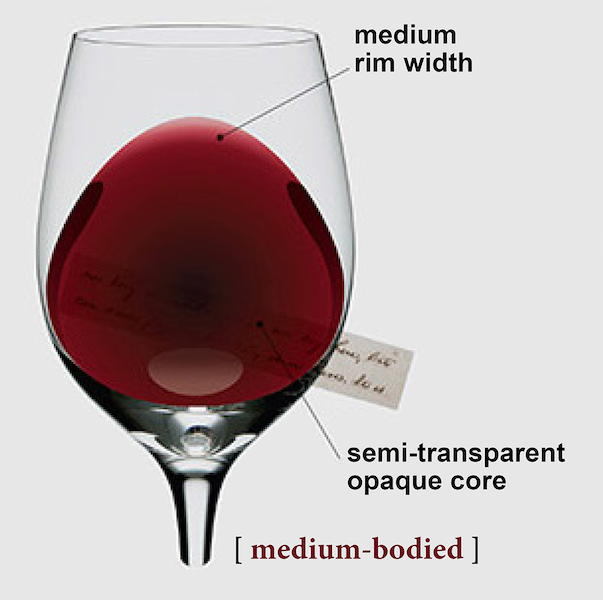
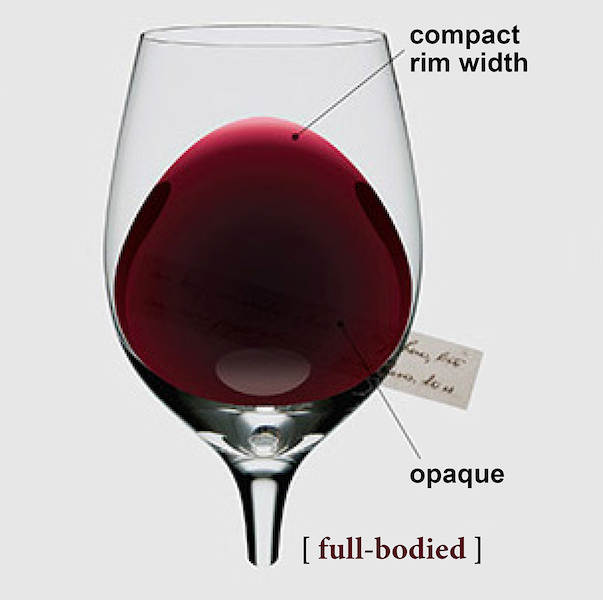
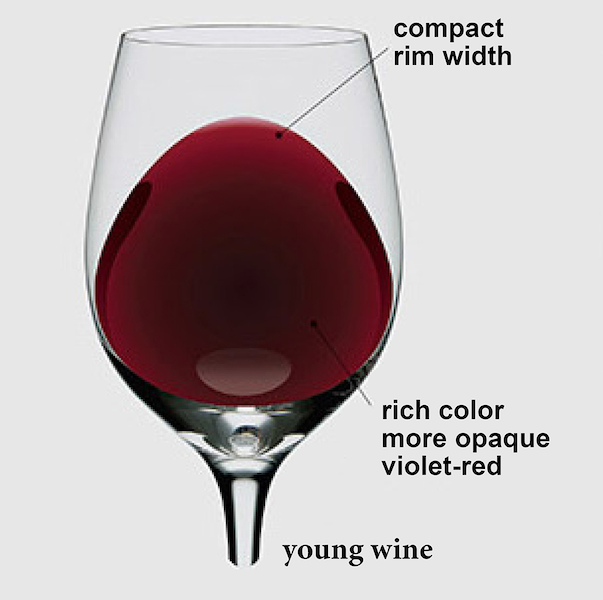
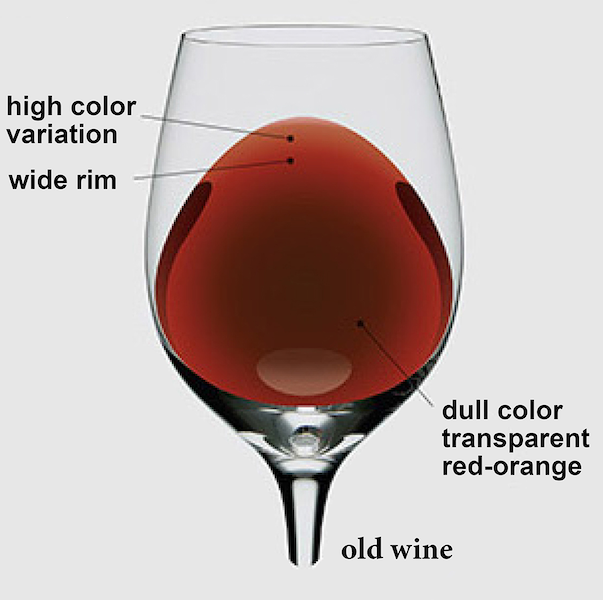
So, you’ve learned a bit about how to “read” wine in the glass. Next time, we’ll look at what foods complement different red wines and why.
Recommended book
The Complete Bordeaux by Stephen Brook
Share with friends

